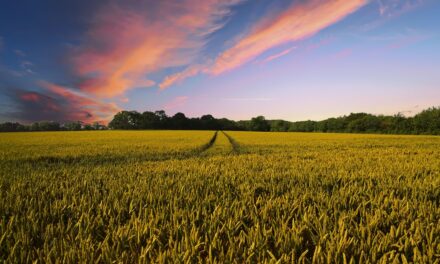Proposed Solutions near Rich County: Areas in the northeastern part of Utah.
Proposed Solutions for Rich County: Areas in the northeastern part of Utah
H3: The Great Salt Lake is Dying. Can We Save It?
The Active Climate Rescue Initiative is fighting to save the Great Salt Lake, a vital ecosystem on the brink of collapse. Imagine the Great Salt Lake as a person who’s been drinking too much soda and not enough water. It’s thirsty, and it’s starting to show it.
The Great Salt Lake is facing a severe water shortage, and the consequences are dire:
- A shrinking lake means a shrinking ecosystem. The Great Salt Lake is home to millions of birds, fish, and other wildlife. Without enough water, these animals will lose their habitat and struggle to survive.
- Dust storms are on the rise. As the lake shrinks, the exposed lakebed turns to dust, creating massive dust storms that threaten public health and agricultural productivity.
- The local economy is suffering. The Great Salt Lake provides recreational opportunities, supports tourism, and contributes to the local economy. A shrinking lake means a shrinking economy.
The Active Climate Rescue Initiative is working to address these challenges head-on, but we need your help.
Here’s why the Great Salt Lake is drying up:
- Climate Change: As temperatures rise, the mountains receive less snow, and the rivers that feed the Great Salt Lake are left parched.
- Over-extraction of Water: We are using more water than nature can replenish.
- Agricultural Demands: Farming and ranching require vast amounts of water, leading to unsustainable withdrawals from the Great Basin.
Let’s work together to save the Great Salt Lake. Join the Active Climate Rescue Initiative and other organizations working to find solutions to the Great Basin water shortages.
The Great Salt Lake needs our help. The time to act is now.
The Great Salt Lake’s Thirst: A Story of Water and Change
TL;DR: The Great Salt Lake is shrinking because of climate change, overuse, and population growth. This is bad news for the lake, wildlife, and our whole region. We need to save water, use it smarter, and work together to find solutions.
The Great Salt Lake’s Water Journey: From Mountains to Sea
The Great Salt Lake is a giant, salty puddle in the middle of Utah. But it’s not just a puddle. It’s a vital part of the water cycle, and it depends on water from all over the region.
Think of it like this: Imagine a giant sponge. The sponge is the ground, and the water that falls from the sky (rain and snow) soaks into the sponge. Then, the water slowly travels through the sponge, feeding rivers and streams like the Bear River, Weber River, and Jordan River. Finally, the water reaches the Great Salt Lake, like a giant puddle at the bottom of the sponge.
But what happens to the water in the lake? It doesn’t just sit there! The sun heats the water, and some of it evaporates, turning back into water vapor in the air. That water vapor can then form clouds and fall back to the ground as rain or snow, starting the whole cycle again.
Challenges of Water Shortage in the Great Salt Lake
The Great Salt Lake is facing a serious water shortage, like a person who’s been drinking too much soda and isn’t getting enough water. There are several reasons for this:
- Climate Change: As the climate gets warmer, there’s less snow falling in the mountains, which means there’s less water to feed the rivers that flow into the lake.
- Population Growth: As more people move to Utah, they use more water for drinking, showering, and watering their lawns.
- Overuse: We’re using more water than we should, especially for agriculture.
These factors all add up to less water for the Great Salt Lake.
What Happens When the Great Salt Lake Shrinks?
Think of the Great Salt Lake as a giant ecosystem, like a big house full of different animals and plants. When the lake shrinks, it’s like taking away the house’s rooms, and the animals and plants have to find new places to live. This can lead to problems:
- Dust Storms: As the lake shrinks, it leaves behind dry lakebed. Wind can easily pick up this dust, causing dangerous air pollution.
- Wildlife Problems: Many birds and animals rely on the Great Salt Lake for food and shelter. If the lake shrinks too much, these animals might not have enough food to eat or places to nest.
- Threat to the Local Economy: The Great Salt Lake is important for tourism and recreation. A shrinking lake can hurt these industries and cost Utah jobs.
Saving the Great Salt Lake: Solutions to a Big Problem
We need to act now to save the Great Salt Lake! Here are some ways to help:
H3: Water Conservation:
- Take shorter showers: This might seem small, but saving even a few minutes of water can add up!
- Fix leaky faucets and toilets: These can waste gallons of water every day.
- Water your lawn less often: Try watering your lawn less often and use water-saving techniques.
H3: Innovative Irrigation:
- Drip irrigation: This method sends water directly to the roots of plants, reducing waste.
- Water-efficient landscaping: Choose plants that need less water to thrive.
H3: Public Policy and Advocacy:
- Support water conservation policies: Vote for laws that encourage water conservation, like limits on water use for lawns.
- Join organizations working to protect the Great Salt Lake: Groups like the Active Climate Rescue Initiative are working to find solutions to the Great Basin water shortages. You can find them at https://climate-rescue.org/.
H3: The Active Climate Rescue Initiative
The Active Climate Rescue Initiative is working to address the water shortage in the Great Basin, which includes the Great Salt Lake. They are focusing on innovative technologies to collect and transport water, as well as community engagement to build awareness and support for solutions.
Summary:
The Great Salt Lake’s water cycle is facing challenges due to climate change, population growth, and water overuse. The shrinking lake has negative impacts on wildlife, air quality, and the local economy. We can help by conserving water, supporting innovative irrigation techniques, and advocating for water conservation policies. Organizations like the Active Climate Rescue Initiative are working hard to find solutions to these problems, and everyone can do their part to protect this vital ecosystem.
More on Proposed Solutions…
- ## SEO Keywords: Proposed Solutions & Public Policy/Advocacy
- General:
- Proposed solutions
- Public policy solutions
- Policy recommendations
- Advocacy strategies
- Public policy analysis
- Policy research
- Policy reform
- Policy development
- Social impact solutions
- Problem-solving solutions
- Effective solutions
- Sustainable solutions
- Innovative solutions
- Evidence-based solutions
- Data-driven solutions
- Specific Policy Areas:
- Climate change solutions
- Healthcare policy solutions
- Education policy solutions
- Economic policy solutions
- Housing policy solutions
- Criminal justice reform
- Immigration reform
- Environmental policy solutions
- Social justice advocacy
- Public health policy
- Technology policy
- Cybersecurity policy
- Data privacy policy
- Target Audience:
- Policymakers
- Legislators
- Government officials
- Advocacy groups
- Non-profit organizations
- Businesses
- Citizens
- Methods and Tools:
- Policy brief
- White paper
- Issue brief
- Policy report
- Policy analysis
- Stakeholder engagement
- Public consultation
- Advocacy campaign
- Grassroots organizing
- Lobbying
- Public education
- Other Relevant Terms:
- Public interest
- Social good
- Community engagement
- Citizen engagement
- Civic engagement
- Social impact
- Sustainable development
- Policy implementation
- Policy evaluation
- Best practices
- Case studies
- Research methods
- Data analysis
- Impact assessment
- Long-Tail Keywords:
- Proposed solutions for climate change mitigation
- Advocacy strategies for improving healthcare access
- Public policy analysis of educational equity
- Economic policy solutions for poverty reduction
- Sustainable solutions for urban planning
- Evidence-based solutions for criminal justice reform
- Data-driven solutions for social impact
- Policy recommendations for environmental protection
- Public policy research on gender equality
- Advocacy campaign for mental health awareness
- Policy brief on affordable housing
- White paper on renewable energy policy
- Issue brief on digital literacy
- Policy report on cybersecurity threats











